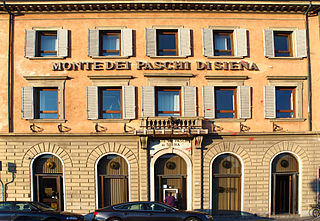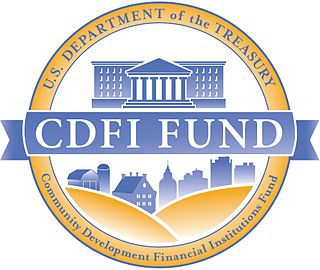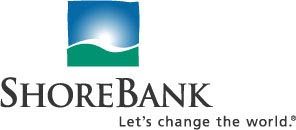
The Federal Deposit Insurance Corporation (FDIC) is a United States government corporation supplying deposit insurance to depositors in American commercial banks and savings banks. The FDIC was created by the Banking Act of 1933, enacted during the Great Depression to restore trust in the American banking system. More than one-third of banks failed in the years before the FDIC's creation, and bank runs were common. The insurance limit was initially US$2,500 per ownership category, and this has been increased several times over the years. Since the enactment of the Dodd–Frank Wall Street Reform and Consumer Protection Act in 2010, the FDIC insures deposits in member banks up to $250,000 per ownership category. FDIC insurance is backed by the full faith and credit of the government of the United States, and according to the FDIC, "since its start in 1933 no depositor has ever lost a penny of FDIC-insured funds".

In the United States, banking had begun by the 1780s, along with the country's founding. It has developed into a highly influential and complex system of banking and financial services. Anchored by New York City and Wall Street, it is centered on various financial services, such as private banking, asset management, and deposit security.

A financial institution, sometimes called a banking institution, is a business entity that provides service as an intermediary for different types of financial monetary transactions. Broadly speaking, there are three major types of financial institution:
- Depository institution – deposit-taking institution that accepts and manages deposits and makes loans, including bank, building society, credit union, trust company, and mortgage broker;
- Contractual institution – insurance company and pension fund
- Investment institution – investment bank, underwriter, and other different types of financial entities managing investments.
In most legal jurisdictions, a financial institution is required to obtain a banking license before it is legally permitted to carry on a banking business. Besides other requirements, such a business is not permitted to contain in its name words such as bank, insurance, national, etc, unless it holds an appropriate license. Depending on banking regulations, jurisdictions may offer different types of banking licenses, such as:

The Community Reinvestment Act is a United States federal law designed to encourage commercial banks and savings associations to help meet the needs of borrowers in all segments of their communities, including low- and moderate-income neighborhoods. Congress passed the Act in 1977 to reduce discriminatory credit practices against low-income neighborhoods, a practice known as redlining.

The Community Development Financial Institutions Fund promotes economic revitalization in distressed communities throughout the United States by providing financial assistance and information to community development financial institutions (CDFI). A government corporation owned by the United States Department of the Treasury, it was established through the Riegle Community Development and Regulatory Improvement Act of 1994. Financial institutions, which may include banks, credit unions, loan funds, and community development venture capital funds, can apply to the CDFI Fund for formal certification as a CDFI. As of September 1, 2005, there were 747 certified CDFIs in the U.S. The CDFI Fund offers a variety of financial programs to provide capital to CDFIs, such as the Financial Assistance Program, Technical Assistance Program, Bank Enterprise Award Program, and the New Markets Tax Credit Program.
A community development financial institution (US) or community development finance institution (UK) - abbreviated in both cases to CDFI - is a financial institution that provides credit and financial services to underserved markets and populations, primarily in the USA but also in the UK. A CDFI may be a community development bank, a community development credit union (CDCU), a community development loan fund (CDLF), a community development venture capital fund (CDVC), a microenterprise development loan fund, or a community development corporation.

The Financial Institutions Reform, Recovery, and Enforcement Act of 1989 (FIRREA), is a United States federal law enacted in the wake of the savings and loan crisis of the 1980s.

ShoreBank was a community development bank founded and headquartered in Chicago. At the time of its closing it was the oldest and largest such institution, and in 2008 had $2.6 billion in assets. It was owned by ShoreBank Corporation, a regulated bank holding company.

"Too big to fail" (TBTF) is a theory in banking and finance that asserts that certain corporations, particularly financial institutions, are so large and so interconnected that their failure would be disastrous to the greater economic system, and therefore should be supported by government when they face potential failure. The colloquial term "too big to fail" was popularized by U.S. Congressman Stewart McKinney in a 1984 Congressional hearing, discussing the Federal Deposit Insurance Corporation's intervention with Continental Illinois. The term had previously been used occasionally in the press, and similar thinking had motivated earlier bank bailouts.
The Office of Financial Institutions (OFI) is an agency of the United States federal government in the United States Department of the Treasury. OFI coordinates the department's efforts regarding financial institutions legislation and regulation, legislation affecting Federal agencies that regulate or insure financial institutions, and securities markets legislation and regulation. The office coordinates the department's efforts on financial education policy and ensuring the resiliency of the financial services sector in the wake of a terrorist attack.
Bank regulation in the United States is highly fragmented compared with other G10 countries, where most countries have only one bank regulator. In the U.S., banking is regulated at both the federal and state level. Depending on the type of charter a banking organization has and on its organizational structure, it may be subject to numerous federal and state banking regulations. Apart from the bank regulatory agencies the U.S. maintains separate securities, commodities, and insurance regulatory agencies at the federal and state level, unlike Japan and the United Kingdom. Bank examiners are generally employed to supervise banks and to ensure compliance with regulations.
Opportunity finance refers to socially responsible investing by an institution in an organization or group of individuals.
A community bank is a depository institution that is typically locally owned and operated. Community banks tend to focus on the needs of the businesses and families where the bank holds branches and offices. Lending decisions are made by people who understand the local needs of families, businesses, and farmers. Employees often reside within the communities they serve.
This article details the history of banking in the United States. Banking in the United States is regulated by both the federal and state governments.
A systemically important financial institution (SIFI) is a bank, insurance company, or other financial institution whose failure might trigger a financial crisis. They are colloquially referred to as "too big to fail".
The Support Center is a not-for-profit organization and a community development financial institution (CDFI), based in Raleigh, North Carolina. It is a statewide nonprofit that partners with Community Development Credit Unions (CDCUs) and community-based organizations to provide small business and mortgage lending services to its members; and to provide training, grants, and loans to create economic opportunities for individuals, families, and communities in underserved markets.
Urban Partnership Bank was a Federal Deposit Insurance Corporation, full-service community development bank in the United States with $1.4 billion in assets. It was established on August 20, 2010 when it acquired the deposits and some of the assets of ShoreBank from the FDIC. It was headquartered in Chicago, Illinois. After chronic losses, it was acquired on Jan 30, 2019 by Providence Bank & Trust.
Pan American Bank & Trust is a U.S. Federal Deposit Insurance Corporation-insured, privately held bank based in Melrose Park, Illinois with $316 million in assets and $288 million in deposits. The bank is wholly owned by American Bancorp of Illinois, Inc., a bank holding company duly registered with the Federal Reserve System. It has six offices in and around Chicago, IL: Melrose Park, Bellwood, Bloomingdale, Palatine, Little Village and Sauganash in Chicago.

Capital Impact Partners, or simply Capital Impact, is an American congressionally chartered, District of Columbia nonprofit and certified community development financial institution that provides credit and financial services to underserved markets and populations in the United States. S&P Global issued Capital Impact its first rating in 2017.








